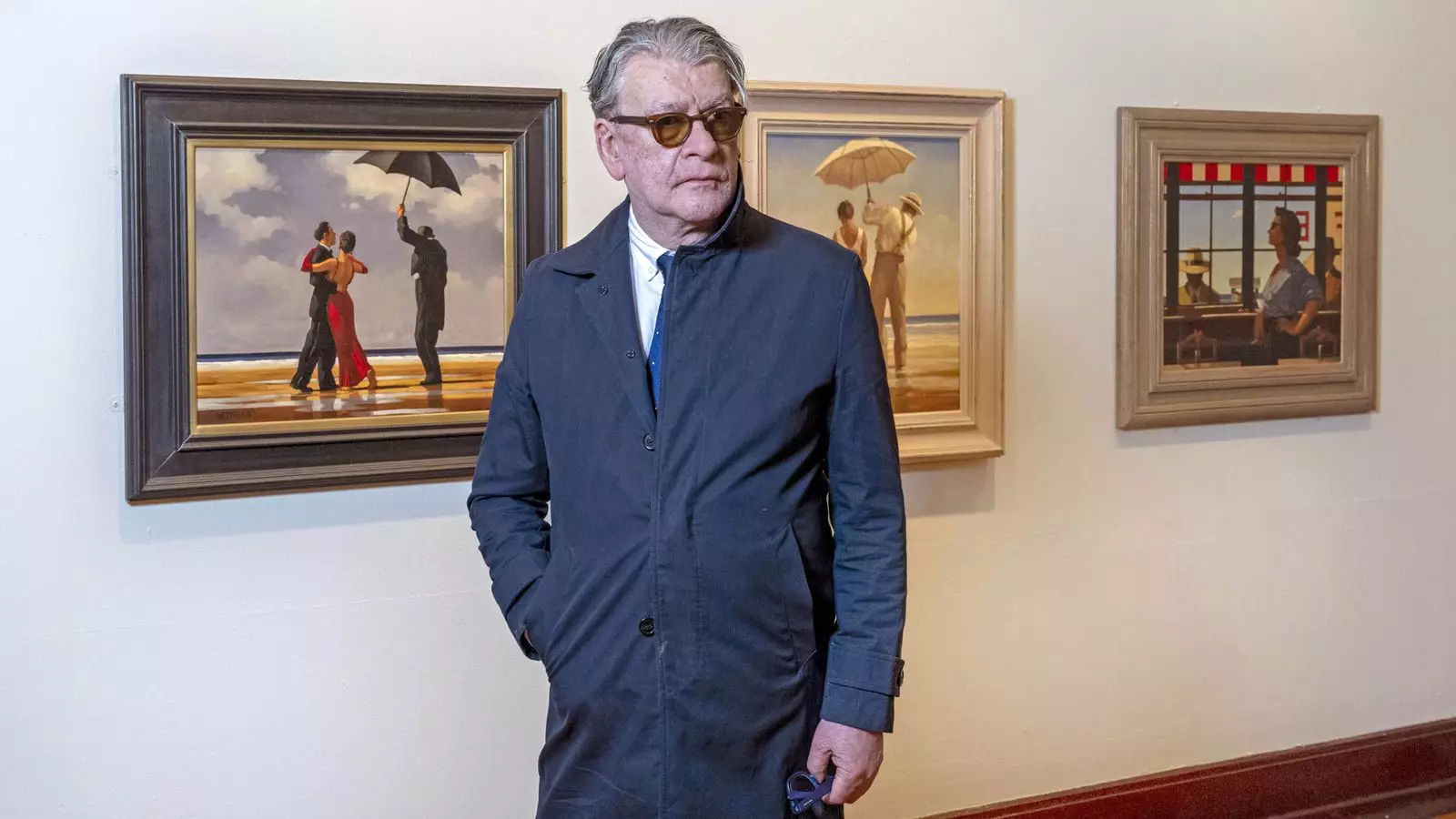Jack Vettriano’s life story is a formidable juxtaposition of struggle and triumph, encapsulated within the canvas of Scottish culture. Born Jack Hoggan on November 17, 1951, in the humble town of Methil, Vettriano’s path diverges sharply from the conventional arc of formal art education; he left school at the tender age of 15 to embark on a career as a mining engineer. This transition from mining to painting was ignited serendipitously when a girlfriend gifted him a box of watercolors for his 21st birthday. The transformative power of art is palpable here – an ordinary life reshaped by a single gift. It raises questions about how fate intervenes in our passions and underlines the very heart of human creativity: it often emerges not from privilege, but from the unlikeliest of inspirations.
Vettriano was not born into the art elite; instead, he epitomized the self-taught artist, immersing himself in the works of the Old Masters and studying impressionists and surrealists with an intensity that bordered on obsession. His time spent at Kirkcaldy Galleries is emblematic of this dedication, revealing a profound respect for the tradition he was stepping into. It’s ironic that in today’s society, where cultural appropriation is often discussed, Vettriano’s early work leaned heavily on imitation. Yet in his case, it was not mere imitation, but a rigorous learning process that would later serve as fertile ground for his own unique voice.
The turning point in Vettriano’s career arrived in 1998 when he submitted two pieces to the Royal Scottish Academy’s annual exhibition, both of which were sold within hours. This moment not only validated his calling but positions him as a quintessential example of how public recognition can burgeon from persistent effort and determination. It was an exhilarating jolt; an artist’s dream realized through sheer tenacity rather than legacy. This raises poignant discussions about the role of artistic institutions and their gatekeeping in shaping whose voice is amplified.
Among Vettriano’s extensive oeuvre, “The Singing Butler” stands as a cultural milestone. This piece transcends the confines of traditional art appreciation, evolving into a symbol of contemporary Scottish identity. Its portrayal of elegance amid chaos—a couple dancing against the backdrop of a stormy beach—resonates with many, capturing the dual nature of Scotland: beauty and turmoil intertwined. The auction of this piece for a staggering £744,800 in 2004 was not merely a personal achievement for Vettriano; it marked a cultural moment that helped to place Scottish art on the global stage. The dialogue surrounding its sale invites reflection on our collective relationship with art and what it signifies in terms of economic value.
With the news of Vettriano’s passing at the age of 73, the resonance of his contributions to Scottish art cannot be overstated. His publicist noted that his evocative creations would continue to inspire generations, yet the void left by his absence is palpable. Scotland’s First Minister, John Swinney, paid poignant homage to Vettriano, acknowledging his humble beginnings and prolific output. The sentiment encapsulates a collective sentiment of gratitude mixed with loss, a reminder that true artistry enriches community and culture.
While Vettriano’s legacy will undoubtedly endure, his death also highlights the precarious nature of an artist’s fame. As much as we celebrate the brushstrokes that echoed through gallery walls worldwide, it is essential to confront the often dark pressures that accompany artistic life. The art world is fraught with expectations, and the struggle for visibility can overshadow the creative spirit. This dichotomy affirms that while we cherish the icons, we must also nurture the vulnerable human beneath the paintbrush.
Vettriano’s passing is, undoubtedly, a moment of reflection on the future landscape of Scottish contemporary art. The feedback loop of admiration he fostered creates a unique opportunity for emerging artists to glean inspiration from his journey. As Scotland mourns one of its most beloved creators, it should also channel that grief into encouragement for the next generation to rise—an act of artistic rebellion against the shadows of insecurity and doubt. This generational discourse about the evolution of art in Scotland should serve as a catalyst not just for remembrance, but for action.
Jack Vettriano’s influence is far-reaching, and while he may have left this world, his narratives will continue to echo through the colorful corridors of Scottish art, urging us all to explore the uncharted realms of creativity within and around us.


Leave a Reply